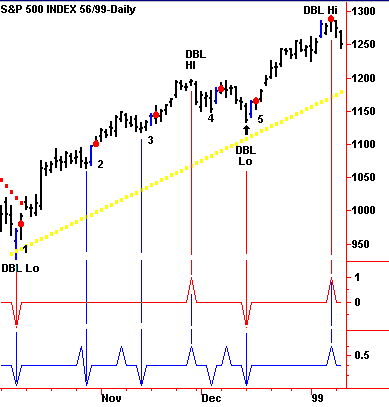
![]() ProfitTrader�
TREND CHANNEL
ProfitTrader�
TREND CHANNEL
Standard deviation based Trend Channels are designed to show the trading
trend. Yellow Trend Channels are plotted in rising markets; red, in declining
trends.
To begin:
- Click on the Audio link below to activate the audio chart commentary. A Real Audio Player is required for the audio files. If you do not have a Real Audio Player, click here for information on downloading a free Player.
- Effective 12/18, we have added a Q&A feature to this presentation. To post a question on this indicator for Walter to answer, and to view previous Q&A sessions, click Q&A Session. (You will be prompted to sign our guest register to participate in this part of the presentation if you have not already done so.)
- Click
Next to go to next page in the presentation.
NOTE: Before clicking on the "audio" link, allow the chart to fully load. If the charts do not download completely, right mouse click and choose "refresh".
Real Server Audio (default that appears at top of chart) to access the audio file from our RealAudio server; or
Download Audio to download audio file onto your hard drive. This option takes several minutes to download, but if you don't have a lot of bandwidth with your ISP, the audio file will play better.
